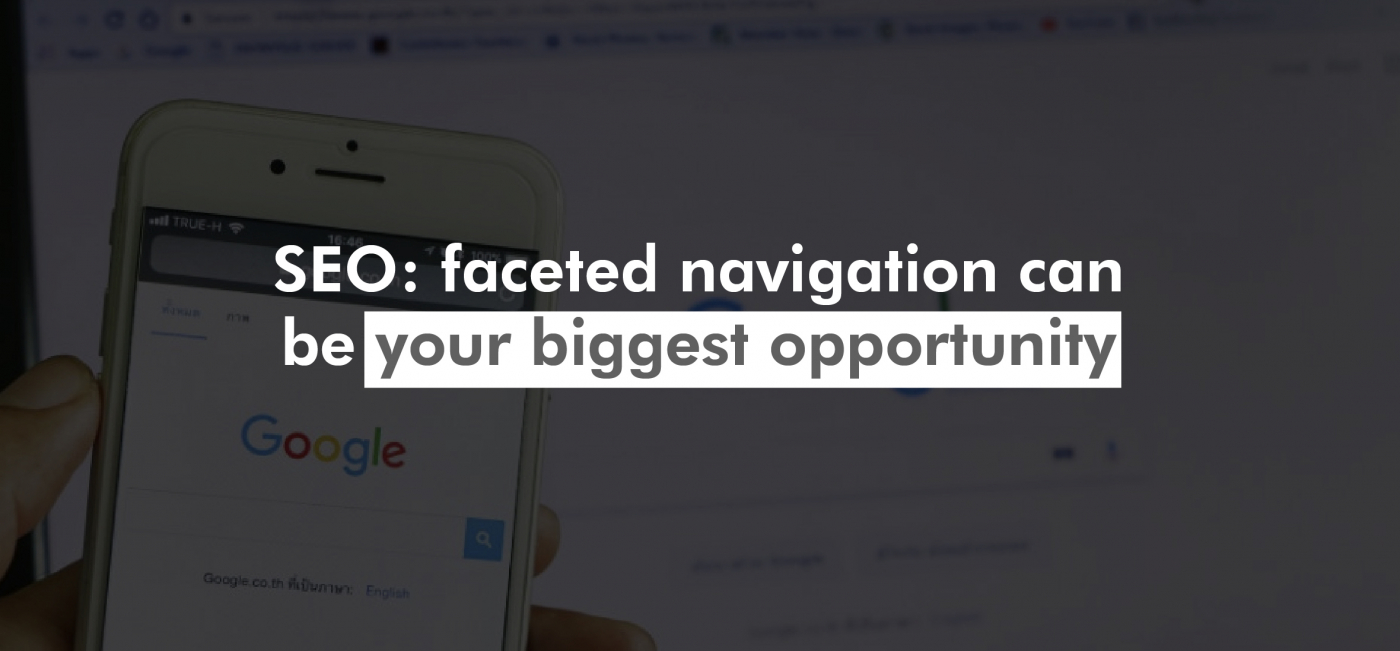Optimizing faceted navigation, regardless of what your e-commerce sells, is the best opportunity to increase natural search performance.
Known as well as guided search, faceted navigation allows you to apply filters to the product list that shows on your page.
Choosing product attributes in these filters allows buyers to see what they want to see, that is, to focus only on what they are looking to buy.
For example, let’s say we sell high-end pens. On our site, we could offer filters by brand, material, ink color, and tip type. In turn, the facets or attributes under “tip type” could include fountain pens or pens, pencils, markers, etc.
The key to ideal natural search performance is for each of the attributes in these filters to generate a page optimized for a Long Tail.

Long Tail benefits
In addition to the amount of traffic, long tails also represent a higher sales opportunity because buyers are typically further down the sales funnel.
This means that someone searching for a “price gold pen with black ink” is much closer to purchasing someone searching for a “pen”. The keyword “pen” might represent more traffic, but that traffic is unlikely to result in the conversion we want.
In other words, the more specific the Long Tail, the higher the purchase intent.
Unfortunately, not all content can be optimized to drive Long Tail traffic: there are not enough hours in the day. On the other hand, we can take advantage of the faceted navigation of our site to generate optimized pages with Long Tails.
In this direction, the value of faceted navigation lies in the thousands of pages that are automatically created and linked, each of which potentially points to a different Long Tail that can drive sales.
Let’s remember that each of the filters and attributes has some value to buyers. And this, let’s say it again, translates as quality traffic.

Warning: duplicate content?
Faceted navigation doesn’t represent a risk of duplicate content. As long as each page created by each filter and attribute mix displays a different combination of products, it cannot be considered duplicate content.
However, we must make sure that the SEO elements of each filter and attribute combination are optimized. For example, the page for Parker gold pens should have a title tag, a meta description, and a relevant heading, different from the one for Cross silver pens.
Some worry about losing crawl equity… This is a real concern for sites with massive amounts of truly duplicate content, as search engine crawlers will spend a lot of time on the site.
And if we don’t have the content optimized for easy crawling, the bot won’t be able to identify valuable content easily and may even reduce the time it spends crawling our site. However, with faceted navigation, this is not a concern because each page is truly unique.
Benefits that decrease
At this point is easy to imagine thousands or even millions of pages generated by different faceted combinations according to filters. There could indeed be many pages, but it’s necessary to programmatically point to Long Tails.
However, there comes a time when combinations of more and more attributes within a single filter no longer represent a reasonable natural search benefit. Why? It is unlikely that a user will search for all the attributes of a filter in a single Long Tail.
So, in the case of multiple selections, we must limit the indexing of pages containing multiple attributes within a single filter.
According to our example, we have to make the page of gold, silver, and black ink pens ineligible for search engines or insert a canonical tag referring to a page with only one of the selected filters.
And if we are in an industry where keyword research suggests that people are looking for multiple attributes within the same filter, we can determine how many attributes are valuable, and work with the development team to define what the solution is.
For example, for floor tiles, buyers are looking for a combination of black and white, in addition to black and white separately. Making an exception for some combinations and not others may introduce too much complexity in the compilation, but result in the targeted conversion if the data suggests it is worthwhile.

Content-rich sites in general and e-commerce, in particular, can greatly improve both their bounce rate (in the sense of lowering it) and the browsing experience of their users with proper use of their taxonomies and effective management by their CMS. All this will increase the SEO of the site, but putting the interests of the users and the quality of the content first. It should never be otherwise, and even less so in the media field.



